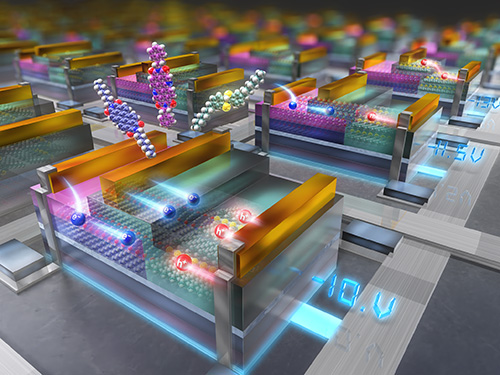
Organic integrated circuits, constructed with small molecules or polymers, show great potential for human-friendly interactive mobile applications. These circuits are lightweight, flexible, biocompatible, and cost-effective. As a result, they are important for the development of radio-frequency identification tags, smart displays, and healthcare sensors. However, traditional organic circuits are incompatible with modern lithographic techniques and thus suffer from low integration density and poor data-processing capability. To address this issue, ongoing efforts are focused on developing multivalued logic circuits based on antiambipolar transistors (AATs).
In a recent breakthrough, a research team from MANA, including principal researcher Ryoma Hayakawa, group leader Yutaka Wakayama, and JSPS fellow Debdatta Panigrahi, has successfully created an organic quaternary logic inverter circuit that can handle four logical states, a notable advancement beyond the traditional three found in ternary logic circuits. The organic quaternary logic inverter circuit was constructed by connecting an AAT, comprising two "n"-type organic semiconductors and a "p"-type organic semiconductor, to a double-layered "n"-type transistor in series.
Dr. Hayakawa explains: "We have developed an organic AAT, which exhibited two distinct negative differential transconductance (NDT) characteristics. The bi-NDT characteristics were achieved via the incorporation of two lateral organic heterojunctions. Each heterojunction could generate an NDT characteristic, which instigated the bi-NDT behavior in the AATs." This unique bi-NDT feature enabled the team to produce a quaternary inverter that can handle four logic states without increasing the number of transistors. This innovation can, thus, significantly improve the data-processing capability of organic integrated circuits.
This quaternary inverter achieves the four distinguishable logic states of "1," "2/3," "1/3" and "0" at a relatively low driving voltage of 14 V, making it suitable for energy-efficient logic applications. The proposed circuit thus advances the capabilities of organic circuits for more demanding computing applications.














